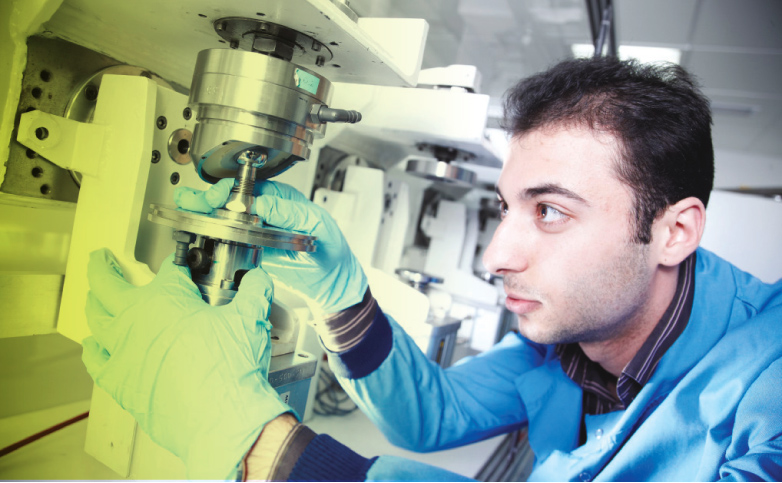
Case Study
Setting the standard for joint replacement testing
Date: June 23, 2015
Leeds’ world-leading expertise in designing methods to test replacement joints means that it is now setting the standards by which implants should be tested.
Although the equipment used to test replacement joints is fairly standard, designing the test methods that will increase confidence in pre-clinical simulations requires specialist expertise. Leeds’ approach to this, together with its vast databank of simulation tests, means it is well placed to develop robust pre-clinical test methods that can be universally applied.
With funding from the Medical Technologies IKC, a co-development project has been set up with the simulator manufacturer Simulation Solutions. Researchers working in Leeds’ ISO9001-accredited joint simulation facility have been able to draw up a list of specifications detailing how machines built by Simulations Solutions should be set up and calibrated to ensure the test results they produce meet the highest possible standards.
Simulation Solutions’ machines, are tested and evaluated at Leeds, and standard operating procedures (SOPs) are written to ensure that all users are applying the same rigorous standards to their device testing.
“New machines currently being designed by Simulation Solutions are much more sophisticated. They provide more accurate following of loading and motion patterns, but their complexity does mean that the operating procedures need to be robust and also standardised,” explains Dr Louise Jennings, Associate Professor in Leeds Institute of Medical and Biological Engineering. “That means researchers can produce pre-clinical evaluation results that are universally trusted. Medical Technologies IKC funding has been critical in developing research and test methods for pre-clinical testing and for developing the joint SOP/equipment offering.”
The project means that we are able to work with Simulation Solutions to provide standard operating guidelines alongside their equipment, which universities or commercial companies can use to generate reliable test data for devices. This approach has helped the company to enter new markets in India and in China, where regulation of joint replacements is becoming increasingly rigorous.
Back to Case Studies
